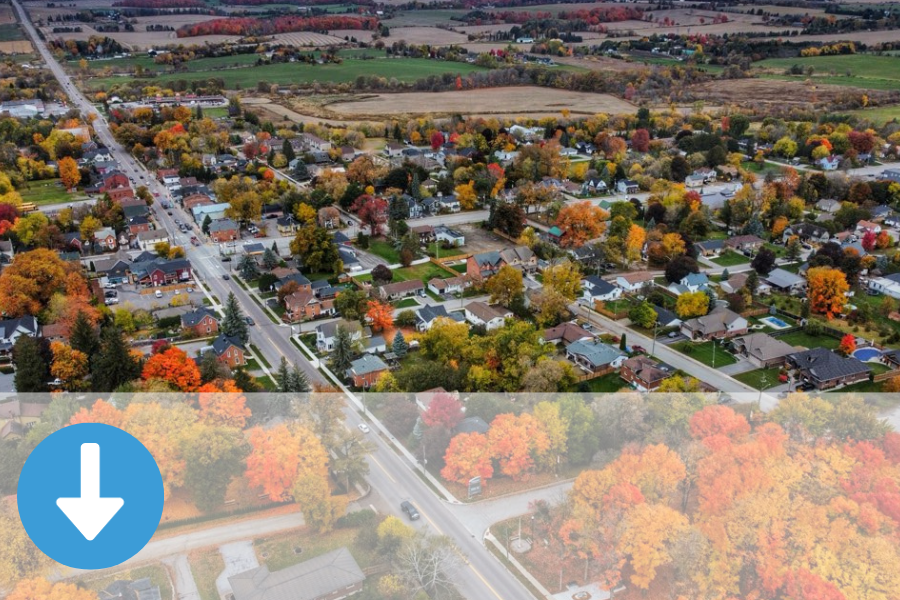Municipal Dashboard - Grow
2024 Result: 4,795
|
Service level target |
||||||||||||
|
The Town expects to maintain or increase the number of businesses year over year. |
||||||||||||
|
How is this measured? |
||||||||||||
|
This information is collected and provided by the Community Data Program (CDP) which is a membership-based initiative open to any Canadian public, non-profit or community sector organization with a local service delivery or public policy mandate. Along with information from Statistics Canada on registered businesses through the Canadian Business Register (BR), the CDP is used to compile information related to business composition, business ownership, business performance, and business counts across Simcoe County. Data is collected year-round and the Canadian Business Counts are released semi-annually. |
||||||||||||
|
Why is this measure important? |
||||||||||||
|
The Town of Innisfil does not have a municipal business licensing system so the Canadian Business Register provides valuable insights to the health of the local economy. This data assists us in understanding the types of businesses which operate within Innisfil (including demographics, industries and business performance) so that we can ensure programming and servicing supports economic growth and meets the needs of local business leaders and entrepreneurs. This data is also relied upon by the Town’s Economic Development team to develop business retention and expansion initiatives as well as lead generation activities in alignment with their Economic Development Strategic Plan. |
||||||||||||
|
Historical results |
||||||||||||
|
*The Town began measuring this metric in 2022
|
||||||||||||
|
What does this result mean? |
||||||||||||
|
Most businesses in Innisfil are small businesses between 1-9 employees (79% of all businesses with employees), and the Town is underrepresented in medium-to-large scale businesses. According to a recent report by Deloitte, “Small firms are the major source of new products and ideas, while mid-size and large business are typically more export-oriented and generate higher operating surpluses. A healthy mix of small, medium, and large firms ensures that a community can capitalize on innovation and entrepreneurship opportunities and at the same time attract and grow investment”. As we prioritize growth in the Innisfil Heights Employment Area over the coming years, this is anticipated to provide overall balance through the attraction of new large-scale firms. It’s important to note that macro-economic factors which have the potential to affect the Canadian economy, such as recent tariff discussions, also have the potential to impact growth rates in Innisfil. At this time impacts are still unknown. |
2024 Result: 14,090
|
Service level target |
||||||||||||
|
The Town of Innisfil anticipates the number of jobs will grow by 3% over the next 5 years. |
||||||||||||
|
How is this measured? |
||||||||||||
|
According to Statistics Canada, “Statistics Canada releases two sets of sample-based estimates of employment on a monthly basis: from the Labour Force Survey (LFS) of households and from the Survey of Employment, Payrolls and Hours (SEPH) of businesses. The household surveys collect information about the employment status and demographic characteristics of their members, while the business statistical programs receive information on jobs from businesses directly or from government payroll remittance reports. The nature of their outputs reflects the designs of the statistical programs, together producing a comprehensive portrait of the labour force." It is important to note that Innisfil-specific data is extracted from the larger Kitchener-Waterloo-Barrie economic region through which it is reported and as such reliability of data may vary. |
||||||||||||
|
Why is this measure important? |
||||||||||||
|
This measurement is important because trends in employment generally reflect the economic health of a community. This number, in combination with other factors such as wage related data, household income, commuter patterns and labour force participation rates, help paint a comprehensive picture of the economic health of the Town of Innisfil. |
||||||||||||
|
Historical results |
||||||||||||
|
||||||||||||
|
What does this result mean? |
||||||||||||
|
Based on employment estimates provided through Lightcast, job growth appears to be steadily climbing since a dip in employment in 2020. Economic development initiatives such as the DMZ Innisfil Programming, DMZ All Access event series, the Business Retention and Expansion Initiative and workforce related initiatives are supporting businesses as they seek to scale, increase their workforce and hire locally. The Town's Economic Development Strategic Plan outlines the strategic Goals, Objectives, and an Action Plan which is currently being implemented to further support job growth within Innisfil. It’s important to note that macro-economic factors which have the potential to affect the Canadian economy, such as recent tariff discussions, also have the potential to impact growth rates in Innisfil. At this time impacts are still unknown. |
2024 Result: 129
|
Service level target |
||||||||||||
|
The Town estimates that approximately 700 new residential lots will be serviced in the coming year. |
||||||||||||
|
How is this measured? |
||||||||||||
|
Each residential development has a designated number of lots as set out in their Draft Plan or Site Plan approval. Each lot on the plan requires servicing, whether that be water, sanitary or storm servicing. Once all municipal services have been constructed within the development, up to the lot line, then tested, videoed and certified, these lots are considered serviced and ready for building permit application. |
||||||||||||
|
Why is this measure important? |
||||||||||||
|
This measure is important as it provides an indication of the number of residential lots that are fully serviced and ready for building permit application. For a growth municipality such as Innisfil, it is also an indication of the rate of residential growth in the Town. |
||||||||||||
|
Historical results |
||||||||||||
|
||||||||||||
|
What does this result mean? |
||||||||||||
|
We continue to review the construction of municipal servicing for residential lots and developments to ensure quality infrastructure for our residents that meet Town Standards. Steady increases in the number of residential lots that are fully serviced ensures the Town can achieve the provincially assigned housing targets annually. |



